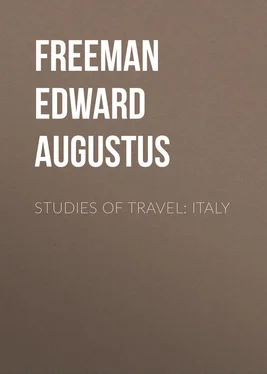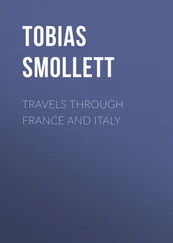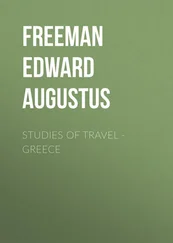Edward Freeman - Studies of Travel - Italy
Здесь есть возможность читать онлайн «Edward Freeman - Studies of Travel - Italy» — ознакомительный отрывок электронной книги совершенно бесплатно, а после прочтения отрывка купить полную версию. В некоторых случаях можно слушать аудио, скачать через торрент в формате fb2 и присутствует краткое содержание. Жанр: foreign_antique, foreign_prose, на английском языке. Описание произведения, (предисловие) а так же отзывы посетителей доступны на портале библиотеки ЛибКат.
- Название:Studies of Travel: Italy
- Автор:
- Жанр:
- Год:неизвестен
- ISBN:нет данных
- Рейтинг книги:5 / 5. Голосов: 1
-
Избранное:Добавить в избранное
- Отзывы:
-
Ваша оценка:
- 100
- 1
- 2
- 3
- 4
- 5
Studies of Travel: Italy: краткое содержание, описание и аннотация
Предлагаем к чтению аннотацию, описание, краткое содержание или предисловие (зависит от того, что написал сам автор книги «Studies of Travel: Italy»). Если вы не нашли необходимую информацию о книге — напишите в комментариях, мы постараемся отыскать её.
Studies of Travel: Italy — читать онлайн ознакомительный отрывок
Ниже представлен текст книги, разбитый по страницам. Система сохранения места последней прочитанной страницы, позволяет с удобством читать онлайн бесплатно книгу «Studies of Travel: Italy», без необходимости каждый раз заново искать на чём Вы остановились. Поставьте закладку, и сможете в любой момент перейти на страницу, на которой закончили чтение.
Интервал:
Закладка:
We are not describing at length what may be found described at length elsewhere. But there is another point in these Etruscan sculptures which gives them a strange and special interest. This is their strangely Christian look. The genii are wonderfully like angels; but so are many Roman figures also, say those in the spandrils of the arch of Severus. But Roman art has nothing to set alongside of the Lucumo reclining on his tomb, not exactly like a strictly mediæval recumbent figure, but very like a tomb of the type not uncommon a little later, say in the time of Elizabeth and James the First. And in the sculptures on the chests, wherever, instead of familiar Greek legends, they give us living pictures of Etruscan life, we often see the sons of the Rasena clearly receiving a kind of baptism. There is no kind of ancient works which need a greater effort to believe in their antiquity. And nowhere do the sculptures look fresher – almost modern – than when seen in contrast with the walls and roof above and beside them, the sepulchre hewn in the rock, with the great stone rolled to its door.
Præ-Franciscan Assisi
There is a certain satisfaction, a satisfaction which has a spice of mischief in it, in dwelling on some feature in a place which is quite different from that which makes the place famous with the world in general. So to do is sometimes needful as a protest against serious error. When so many members of Parliament showed a few years back, and when the Times showed only a very little time back, that they believed that the University of Oxford was founded by somebody – Alfred will do as well as anybody else – and that the city of Oxford somehow grew up around the University, it became, and it remains, a duty to historic truth to point out the importance of Oxford, geographical and therefore political and military, for some ages before the University was heard of. When the Times thought that Oxford was left to the scholars, because "thanes and barons" did not think it worth struggling for, the Times clearly did not know that schools grew up at Oxford then, just as schools have grown up at Manchester since, because Oxford was already, according to the standard of the time, a great, flourishing, and central town, and therefore fittingly chosen as a seat of councils and parliaments. Here there is real error to fight against; in other cases there is simply a kind of pleasure in pointing out that, while the received object of attraction in a place is often perfectly worthy of its fame, the place contains other, and often older, objects which are worthy of some measure of fame also. It is quite possible that some people may think that the town of Assisi grew up round the church and monastery of Saint Francis. If anyone does think so, the error is of exactly the same kind as the error of thinking that the city of Oxford grew up around the University. It is Saint Francis and his church which have made Assisi a place of world-wide fame and world-wide pilgrimage, and Saint Francis and his church are fully worthy of their fame. Yet Assisi had been a city of men for ages on ages before Saint Francis was born, and Assisi would still be a place well worthy of a visit, though Saint Francis had never been born, and though his church had therefore never been built. It is perhaps a light matter that Assisi had eminent citizens besides Saint Francis and very unlike Saint Francis, that it was the birthplace of Propertius before him and of Metastasio after him. But before Assisi, as the birthplace of the seraphic doctor, had earned a right to be itself called "seraphica civitas," before one of its later churches came to rank with the patriarchal basilicas of Rome, Assisi had, as a Roman and an early mediæval city, covered its soil with monuments of which not a few still exist and which are well worthy of study. And in one way they have a kind of connexion with Saint Francis which his own church has not. The saint never saw his own monument; it would have vexed his soul could he have known that such a monument was to be. But in his youth he saw, and doubtless mused, as on the bleak mountain of Subasio and the yellow stream of Chiaschio, so also on the campanile and apse of the cathedral church of St. Rufino and on the columns of the converted temple of the Great Twin Brethren.
Assisi is one of the hill-cities; but the hill-cities supply endless varieties among themselves. Assisi does not, like the others which we have spoken of, occupy a hill which is wholly its own; the hill on which it stands, though very distinct, is still only a spur of a huge mountain. As at Mykênê, while the akropolis is high enough, there is something far higher rising immediately above it. And the akropolis of Assisi is a mere fortress; even if it was the primitive place of shelter, it cannot have been inhabited for many ages. The duomo stands, very far certainly from the top of the hill, but at the top of the really inhabited city with its continuous streets, and that is no small height from the lowest line of them. Above the church are the remains of the theatre, of the amphitheatre; the distant tower beyond it, and soaring over all, the fortress of Rocco Grande with no dwelling of man near it, or for some way below it. To go behind Assisi is almost more needful than in the case of any of the other hill-cities, not only for the mediæval walls, for the slight traces which seem to mark an outer and earlier wall; but yet more for the view over the narrow valley, the bleak hills scattered with houses, the winding river at their feet, soon to become yet more winding in the plain, and the glimpse far away of Perugia on its hill. But Assisi has a spot only less wild within the city walls, the ground namely over which we climb from the inhabited streets to the fortress. So it is at Cortona; but there the presence of the church and monastery of St. Margaret makes all the difference. The general view of Assisi, as seen from below, gives us the church of Saint Francis with the great arched substructure to the left, the mountain to the right; between them is a hill with a city running along it at about half its height, sending up a forest of bell-towers, some really good in themselves, all joining in the general effect. Above all this is the hill-top, partly grassy, partly rocky, crowned by the towers of the fortress which looks down on all, except the steep of the mountain itself.
Of particular objects older than the church of Saint Francis, a restriction which of course also cuts out the church of his friend, Saint Clara, there can be no doubt that the monument of greatest interest is the temple in the forum – now Piazza grande – with its Corinthian columns strangely hemmed in by a house on one side and on the other by the bell-tower which was added when the temple was turned into a church. But it is surely not, as it is locally called, a temple of Minerva, but rather of Castor and Pollux. Not the least interesting part of its belongings lies below ground; for the level of the forum at Assisi has risen as though it had been at Rome or at Trier. The temple must have risen on a bold flight of steps, of which some of the upper ones still remain. In front of it, below the steps, was a great altar, with the drains for the blood of the victims, just as we see them on the Athenian akropolis. Such drains always bring to our mind those comments of Dean Stanley on this repulsive feature of pagan and ancient Jewish worship, which has passed away alike from the church, from the synagogue, and from the mosque, save only at Mecca. In front again is the dedicatory inscription with the name of the founder of the temple, and the record of the dedication-feast which he made to the magistrates and people. His name can doubtless be turned to in Mommsen's great collection; we are not sure that in the underground gloom we took it down quite correctly, and it is better not to be wrong. Anyhow the dedication is not to Minerva but to the twin heroes. A great number of inscriptions are built up in the wall of the church. As usual, there are more freedmen than sons; and among the freedmen the one best worth notice is Publius Decimius Eros Merula, physician, surgeon, and oculist, who bought his freedom for so much, his magistracy as one of the Sexviri for so much, who spent so much on mending the roads, and left so much behind him. Here the state of things is vividly brought home to us in which a man could buy, not only his cook and his coachman, but also his architect and his medical adviser. And we are set thinking on the one hand how great must be the physical infusion of foreign blood, Greek and barbarian, in the actual people of Italy, and on the other hand how thoroughly and speedily all such foreign elements were practically Romanized. The son of the slave-born magistrate of Assisi would look on himself, and be looked on by others, as no less good a Roman than any Fabius or Cornelius who might still linger on.
Читать дальшеИнтервал:
Закладка:
Похожие книги на «Studies of Travel: Italy»
Представляем Вашему вниманию похожие книги на «Studies of Travel: Italy» списком для выбора. Мы отобрали схожую по названию и смыслу литературу в надежде предоставить читателям больше вариантов отыскать новые, интересные, ещё непрочитанные произведения.
Обсуждение, отзывы о книге «Studies of Travel: Italy» и просто собственные мнения читателей. Оставьте ваши комментарии, напишите, что Вы думаете о произведении, его смысле или главных героях. Укажите что конкретно понравилось, а что нет, и почему Вы так считаете.












